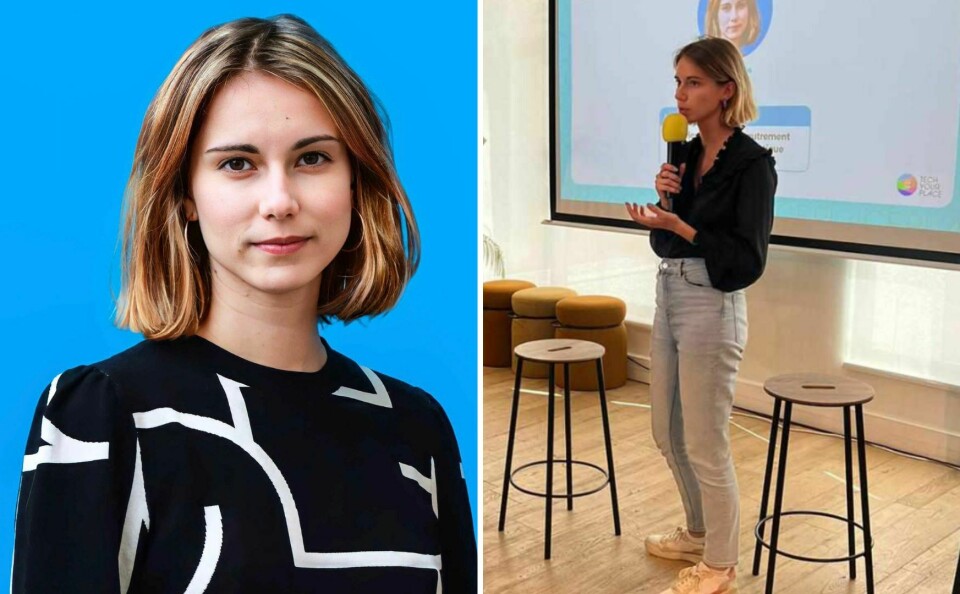When Alice Devès was diagnosed with multiple sclerosis in 2021, she found herself confronted with an immense absence of information about some of her symptoms, mainly the pins and needles she felt in her right arm and leg, or her constant fatigue.
She turned to Anaëlle Marzelière, a friend with mental health conditions. The two young women founded Petite Mu in May 2022, the first media company to focus on ‘invisible disabilities’, with Ms Devès supervising interviews and Ms Marzelière drawing illustrations.
Petite Mu reaches nine million people, in other words 80% of all disabled people in France, according to figures from the association APF France Handicap. Still, it is hardly mentioned by mainstream media.
The Connexion spoke with Ms Devès, an example of the new generation of journalists hoping to give more visibility to disabilities that have previously been ignored, as well as help remove the stigma around these conditions.
“Welcome to Petite Mu, the media that is raising awareness of invisible disabilities,” says the company’s motto on its podcast, Instagram and website.
We have been talking about it in the newsroom. I have asthma. Do I have an invisible disability?
Yes (laughs.) Asthma is listed as a chronic disease. The severity of the disease and its spread will determine whether it is invisible or not. We interviewed someone with a form of asthma so severe that it requires hospitalisation every week.
I have asthma but it does not affect me to the point of disability. Many people would be considered disabled if they had no treatment.
What is the definition of an invisible disability?
No official definition currently exists. It is a disability that cannot be seen. More broadly, many diseases can be united within ‘families’.
There are neurodevelopmental diseases with the ‘dys’ family (dyspraxia, dyslexia, dyscalculia and dysorthographia), attention deficit hyperactivity disorder (ADHD) and people with autism-spectrum issues.
There are auto-immune diseases such as diabetes, multiple sclerosis and Crohn’s disease or chronic diseases such as asthma or endometriosis.
Then there are psychiatric and psychological conditions such as anxiety, depression, bipolar disorder and schizophrenia.
Read more: Mayor’s hunger strike to protest lack of help for disabled in France
Taking your personal experience with multiple sclerosis, could you break down the phases when someone is diagnosed with an invisible disability?
Each disease and how it affects someone is different. I was diagnosed after 18 months with symptoms. But I had not considered it a disability.
Coping with the disease was not particularly difficult because I was expecting even worse. But it took me six months to accept it.
I have constant neuropathic pain that hurts my body daily, and a lot of chronic fatigue, which are both invisible symptoms.
When I try to explain symptoms to friends, all I get is “well, sleep more and you will be better tomorrow.” It does not work like that.
It is a case by case study. I see it with people with psychological issues, like Annaëlle, who try to overcome their conditions by hiding their symptoms.
It is exhausting.
There are similar experiences, however, such as the months or years without diagnosis, the announcement of the disease and its acceptance phase.
My best friend was diagnosed with multiple sclerosis. Here’s what she told me when I asked whether she considered herself a disabled person: “I was diagnosed so long ago that I no longer think about it. I do not talk about it because I do not want people’s perception of me to change.”
I think that way sometimes as well. I have talked about it through Petite Mu but I know there is a permanent mark on my head should I want to work somewhere else.
I gave up a part of my private life that every potential employer now knows.
Petite Mu’s credo is to liberate speech because it affects so many people. There is this social stigma about disabled people, as your best friend has noticed. We want to change that.
Read more: Mimie Mathy: French TV star who turned disability into a driving force
Why is a disability often associated with a wheelchair? Where does it come from?
From the logo portraying a wheelchair user, even though only 2% of disabled people use one. A wheelchair is visible. Nobody can question the disability.
But it is often inadequate if you read some of the comments on Petite Mu. They show that people have said to them: “You are seated, you can wait,” upon showing a disability card. It is unbelievable.
With or without a disability card, people receive the same remarks and treatment. Now imagine having an invisible disability. It is even more difficult.
Read more: Free wheelchairs do not go far enough, say French disabled groups
Do you want Petite Mu to help those living with disability to feel included?
This is how it was envisioned. We created the media we would have liked for ourselves. It is true that you can feel extremely lonely when you are diagnosed. I felt completely out of step with my friends after the denial phase of my diagnosis.
That loneliness spreads quicker than you think. I noticed how friends had more and more remarks about my condition, telling me that I should “take care of myself” or “have a rest”.
While not deliberately malicious, I was no longer invited to events and parties. This is a slow exclusion.
I think Petite Mu helps a lot of people who have difficulty explaining their pain or feel hopeless and excluded from their social lives.
The amount of positive comments expressing gratitude and thankfulness struck me. What does this say?
That invisible disabilities are not talked about. That half of the people I speak with do not know what it is. That the State has not launched a single national campaign. That the European Union tells us that France is behind other countries when taking care of people with disabilities.
Each association covers its own disease, but there are no global movements for the cause.
In the medical world, it is even more complicated to question doctors’ authority.
Medical studies do not have a single course on invisible disabilities. It is clear from reading the comments on our Instagram that many doctors still do not believe in endometriosis.
Some argue that inclusivity is bound to fail for the most severe disabilities. What is your position?
You cannot treat each disability in the same way. Inclusivity has to be incorporated differently for a diabetic than for someone with mental health conditions.
Read more: ‘French society is built around the economy not the right to dignity’
The government unveiled a €2bn plan for disabilities. Do you fear invisible disabilities will still be a lost cause?
I do not know its content but I do not expect much. What I know is that the phrase was not even mentioned during the hour-long press conference.
The priority remains the management of people with mental health issues who are still stigmatised.
The term ‘invisible disabilities’ is being used more in newspapers. What do you expect for the future?
Petite Mu hopes to touch as many people as possible, but mainly to reach people with no disability, in the hope that they become aware of its existence.
Related articles
Does France’s disability badge always allow parking in disabled bays?
The French long-distance runner changing perceptions of disability
Models with disabilities are focus of photographer’s new French show





























